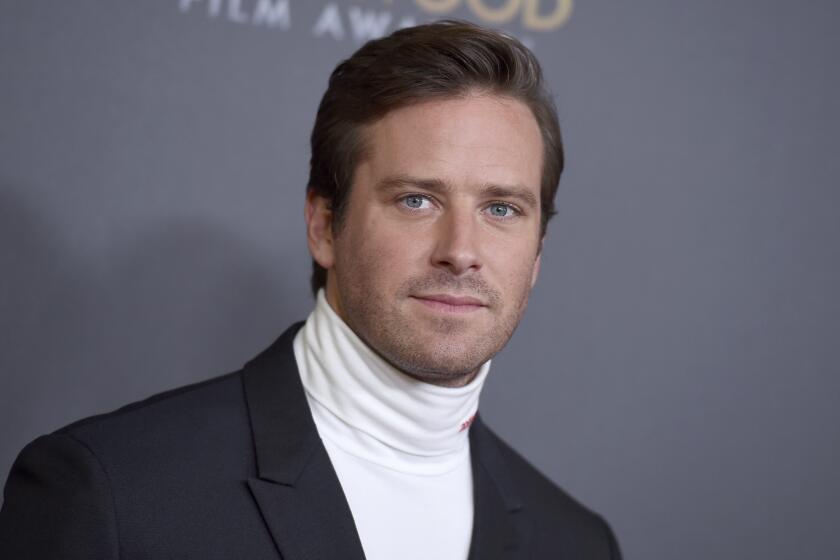Review: ‘The Burnt Orange Heresy’ is not so artful, despite its strong cast
“My job is to separate the good lies from the bad ones,” explains Claes Bang’s James Figueras, a chain-smoking, pill-popping art critic who fatefully paints himself into a corner in “The Burnt Orange Heresy,” a heavily stylized, neo-noir thriller that takes its name from the 1971 novel by “Miami Blues” scribe Charles Willeford.
Had he a more discerning eye, the smug Figueras would have detected that this heavily stylized rendering of refined pulp failed to disguise the increasingly unconvincing plotting despite the pleasurable performances of the artists involved.
Barely making ends meet lecturing gullible tourists in Milan, Italy, Figueras is happily summoned to the Lake Como villa of Joseph Cassidy, a smarmy art dealer (Mick Jagger, savoring each and every syllable of his character’s over-ripe prose). Figueras brings along his latest romantic conquest, a vacationing American lecturee named Berenice Hollis (Elizabeth Debicki).
Turns out the motivation behind the invitation involves gaining access to Cassidy’s neighbor, Jerome Debney (Donald Sutherland), a reclusive J.D. Salinger of an artist whose long-unavailable work has been coveted by Cassidy, by any means necessary.
While Italian director Giuseppe Capotondi is clearly going for a James M. Cain/Patricia Highsmith feel here, the seductively photographed and well-acted production simply can’t gloss over the inconsistencies in the Scott B. Smith-credited adaptation, which pile up higher than all those discarded cigarette butts.
‘The Burnt Orange Heresy’
Rated: R for some sexual content/nudity, drug use and violence
Running time: 1 hour, 38 minutes
Playing: Starts March 6, the Landmark, West Los Angeles
More to Read
Only good movies
Get the Indie Focus newsletter, Mark Olsen's weekly guide to the world of cinema.
You may occasionally receive promotional content from the Los Angeles Times.








